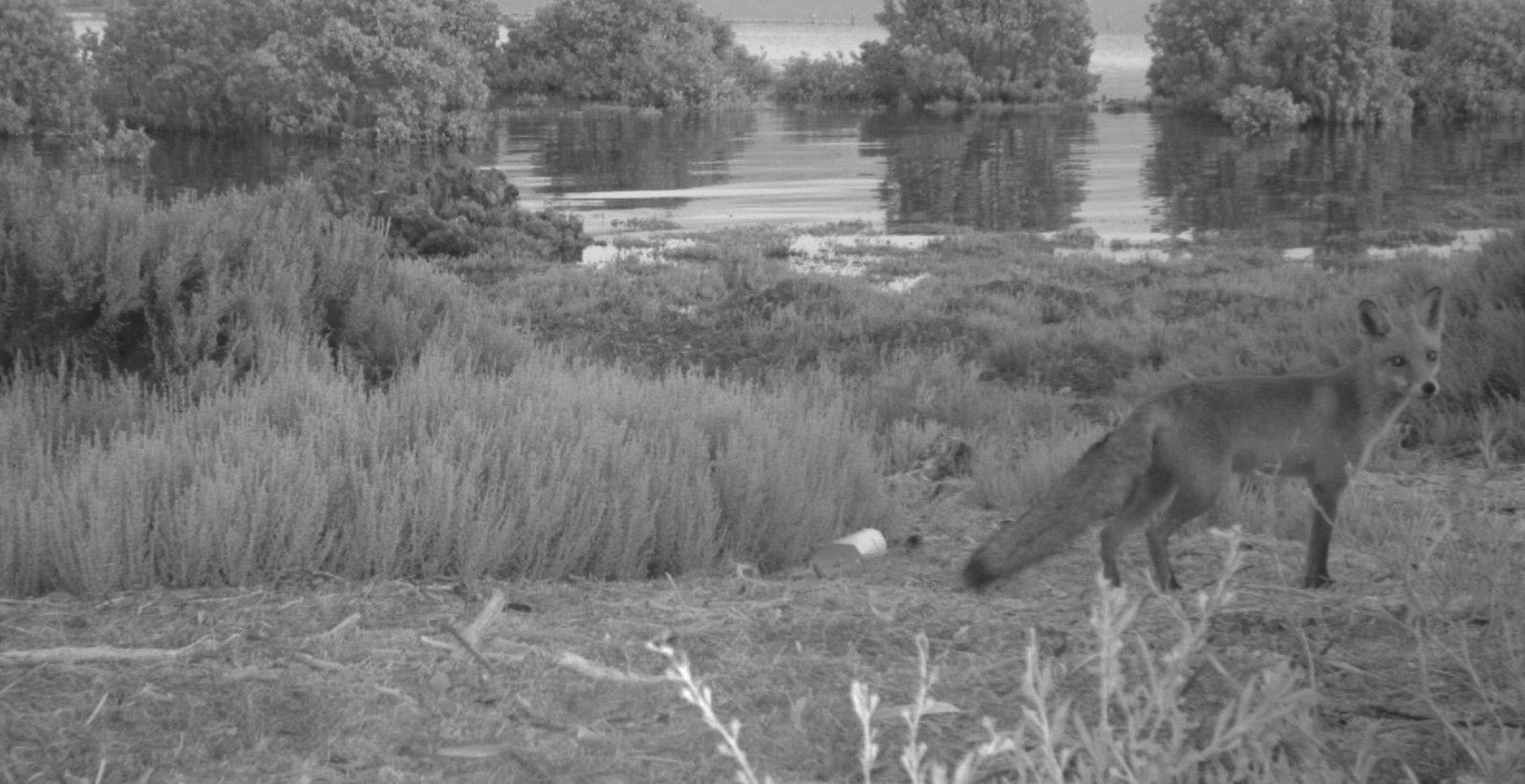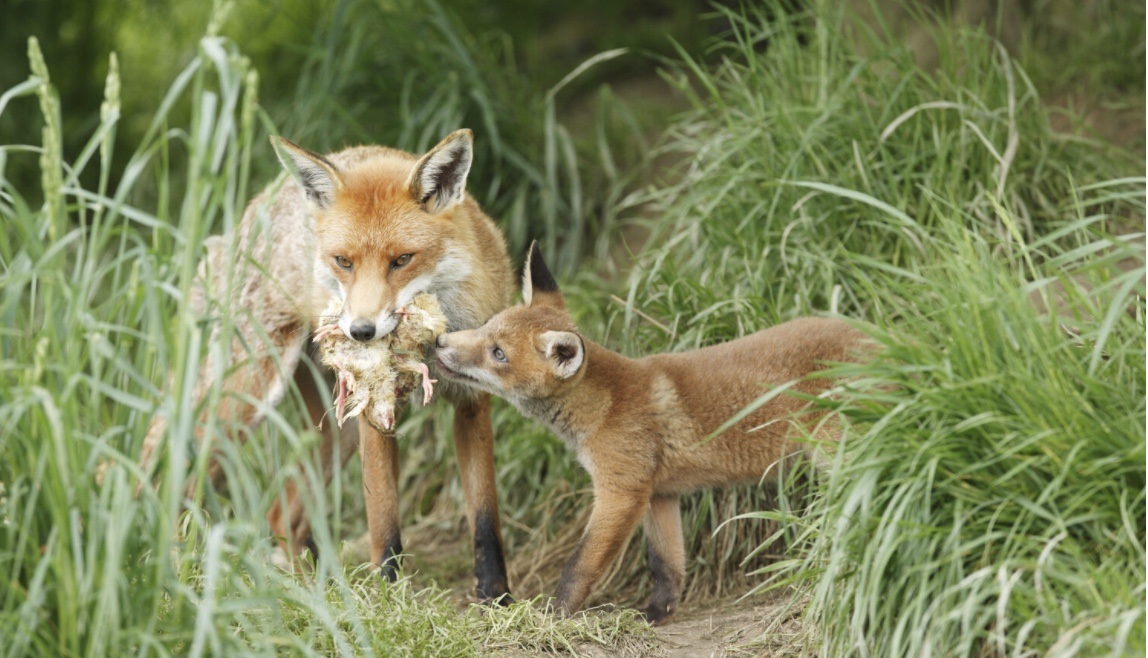European red foxes were first introduced to Australia in the 1870s for recreational hunting. They have spread rapidly and have impacted biodiversity across many parts of Australia. Foxes are a problem in both regional and metropolitan areas.
There are lots of red foxes (Vulpes vulpes) in and around cities because there is plenty of food and shelter in these urban areas.
Where do foxes live in Adelaide?
Did you know Adelaide has a large population of foxes? They can be found everywhere from our beaches to our foothills, suburbs to the CBD, even golf courses, public gardens, and Rundle Mall.
You’re more likely to spot a fox at night while they’re foraging for food. While it’s not uncommon to spot one during the day, they usually spend the daylight hours in their dens or under houses, sheds, dense vegetation, and in stormwater drain pipes.
Being so widespread in metropolitan Adelaide and surrounding suburbs, eradicating them is typically not feasible. Instead, we prioritse managing foxes to protect key native species and sites. In other areas, it is important we learn how to live with them and minimise their impact.
Foxes can be cautious by nature and sometimes you won’t know a fox is around or visiting your neighbourhood. Foxes may enter yards to eat food being provided to pets, or to shelter under buildings or in secluded parts of a garden. Reducing their access to this food and shelter can help minimise their impact.

Why are foxes a pest?
European red foxes are a declared pest animal under the Landscape South Australia Act 2019. There are two key elements that make an animal a pest, they are:
1. Introduced to an area where they don’t naturally occur – either accidentally or deliberately.
2. Have a detrimental impact on the environment, agriculture, and or/pets.
What problems do foxes cause?
Foxes can:
- prey on our native animals, such as hooded plovers and southern brown bandicoots.
- impact on household pets, including chickens, rabbits, and guinea pigs.
- carry diseases, such as mange, which can be transferred to humans and pet cats and dogs.
- dig to create underground dens which may cause damage to buildings and sheds.
Fox behaviour and lifespan
Foxes are most active at night and tend to shelter during the day, although occasionally they may be seen.
They breed in spring producing 3 to 6 cubs at a time with typically only a few reaching maturity. Cubs generally appear in late spring, and once independent they attempt to find their own territory in autumn.
The life span of a fox in the wild can be up to 8 years. However, the average lifespan in urban areas is lower at around 1 to 3 years. Being hit by a car is a major cause of fox death in urban areas. When a fox dies another will likely move into its territory within a few days.

How do I make my yard less attractive to foxes?
The best approach to deterring foxes is eliminating access to things that attract them to the area in the first place, such as easy sources of food and shelter.
There are various ways to avoid foxes in your yard. These include:
- Good fencing and closing your gates.
- Ensuring your chicken coup and other outdoor pet shelters are securely enclosed and fox proofed.
- Always bringing pet food inside, particularly at night.
- Closing your outdoor rubbish bins.
- Closing any holes or gaps around your house or shed to avoid a fox digging and creating a den.
- Removing piles of materials that could be potential shelter for a fox, such as timber, bricks, and hard rubbish.
- Setting up outdoor sensor lights activated by movement of larger animals – as foxes don’t like surprises!
- Never feed a fox. This will elevate their presence in urban areas and only encourage them to associate humans with food.
To learn more, read ‘5 ways to outfox foxes in Adelaide’.
How do I remove a fox?
Foxes are a declared pest in South Australia, and need to be managed accordingly.
There are some options for managing a problem fox, although in an urban setting deterrence is generally a better option given the high likelihood of reinvasion (i.e. another fox taking its place).
If removal of a problem fox is required, making contact with a licensed vertebrate pest controller is the best approach. They may be able to assist with trapping or recommending other control methods.
Unfortunately, when one fox dies, another will move into its territory in a relatively short time due to their highly territorial nature. By taking steps to deter foxes from your yard, you’re more likely to see a lasting benefit in reducing their impact.
Some methods, such as baiting, aren’t recommended in metropolitan areas due to the associated risk to humans and pets, and the use of steel-jawed traps and snares is prohibited in South Australia.
Should I feed a fox?
You should never feed a fox. Foxes are wild animals, and can be unpredictable. They may even bite if provoked, so it is important to be wary.
Foxes are curious by nature, and may even approach you. It is important to discourage them to lessen their impact on our yards and pets, as well as native species. We want to make sure they don’t associate humans with food and safety so if you notice one observing you, or it approaches you, clap and shout to scare them away.
It is important to never feed a fox as this just encourages them to spend time near humans.

How do I report a fox sighting?
To report fox sightings, visit feralscan.org.au.
Note: Under the Landscape South Australia Act 2019, landholders are responsible for the control of foxes in their yards and properties.

